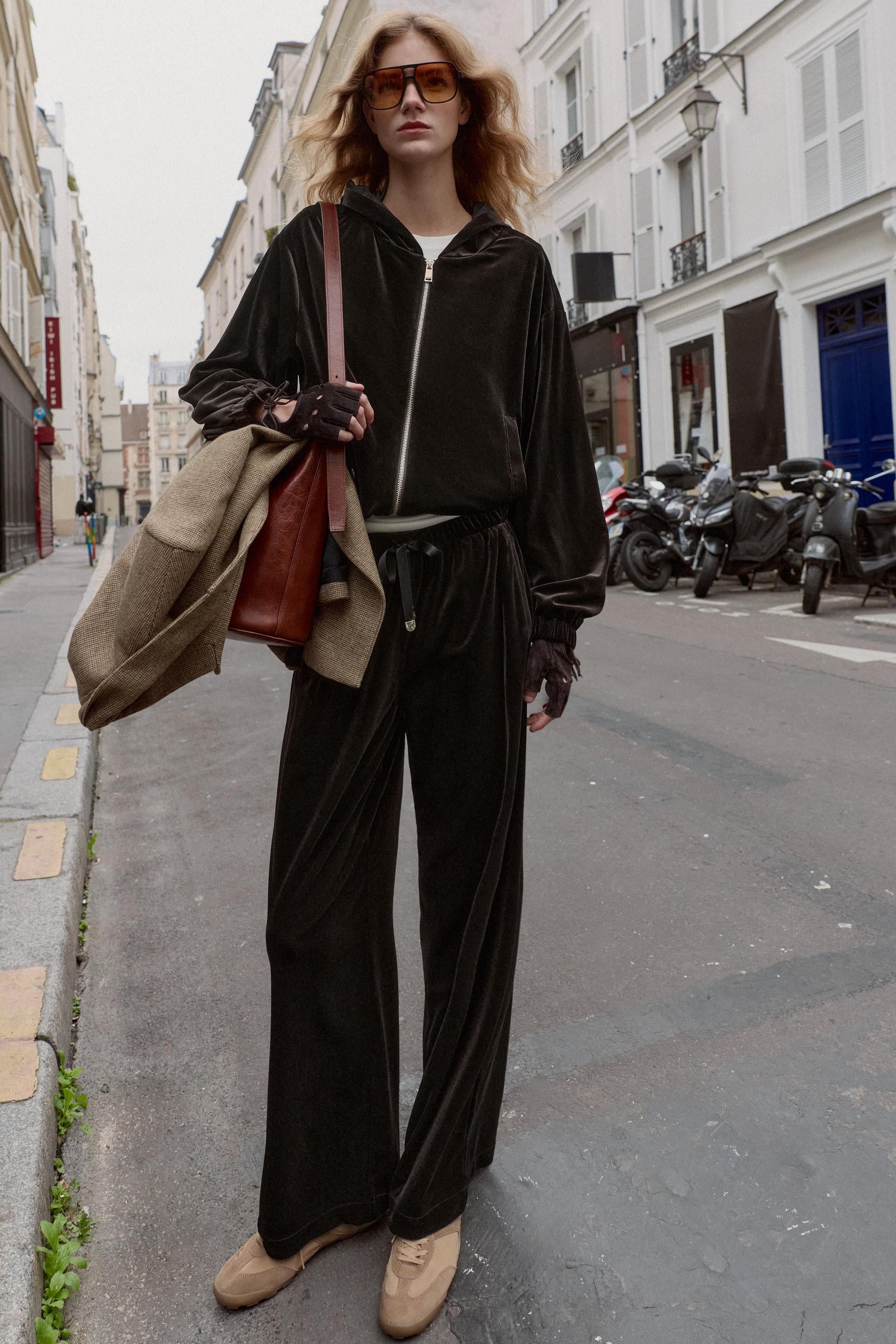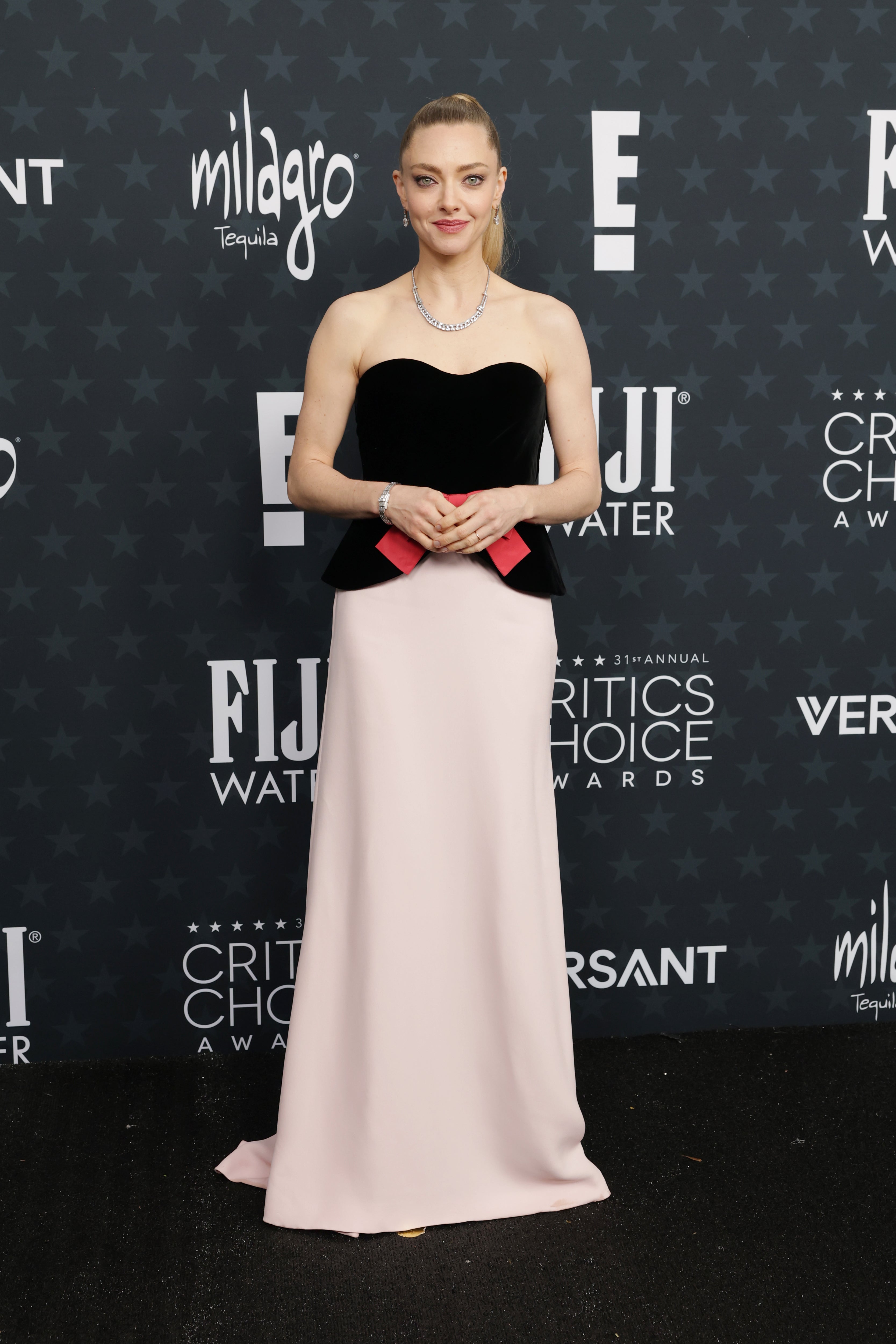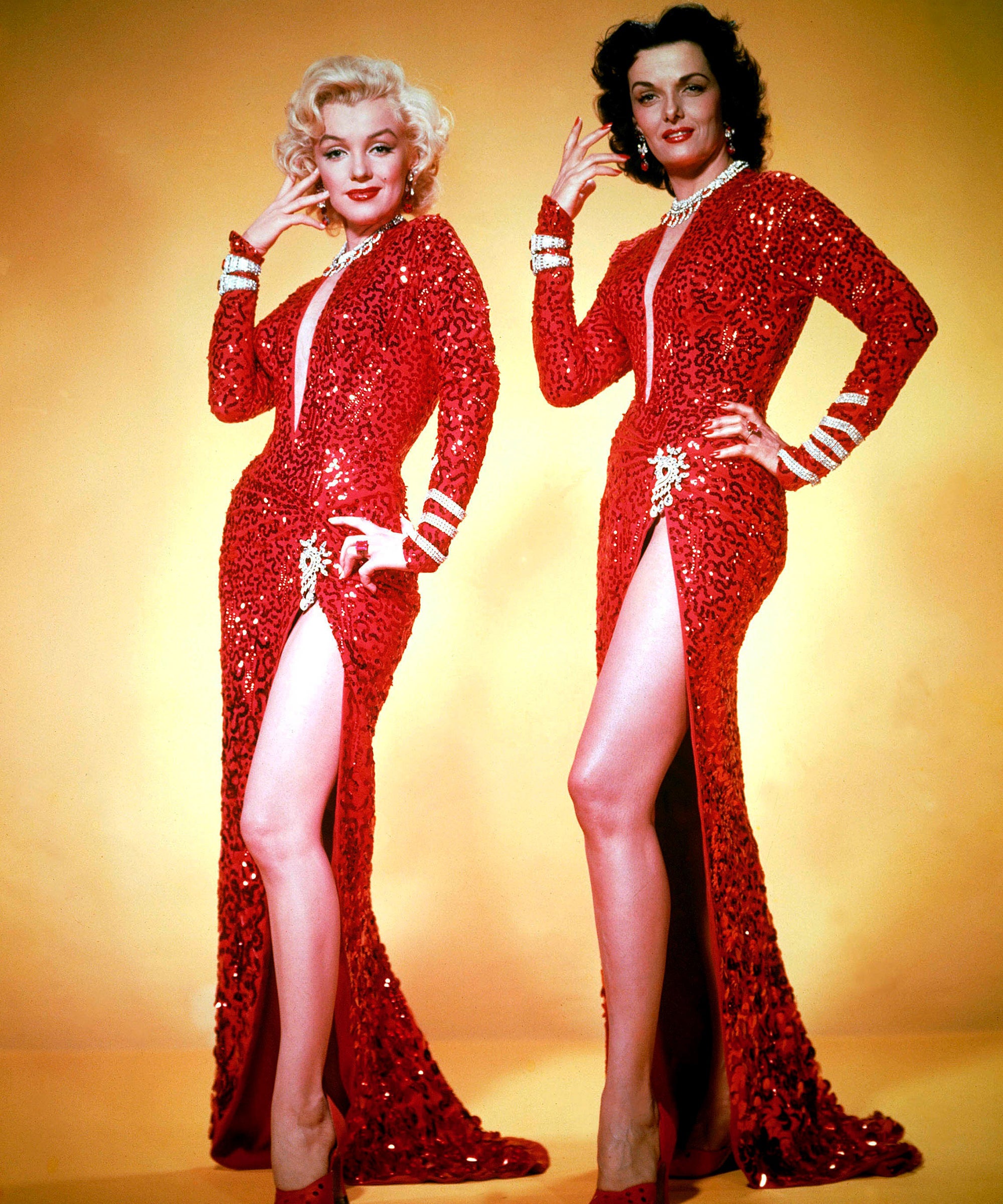
What color best embodies jealousy? One might, at first, be inclined to say green. After all, it’s the shade most readily associated with envy: a bilious, sometimes lurid hue well befitting the green-eyed monster. In Netflix’s new film adaptation of Daphne Du Maurier’s gothic masterpiece Rebecca though, another color dominates the screen. One that’s perhaps better suited to a situation where it’s hard to distinguish nervous resentment from a creeping sense of being haunted. Here, jealousy comes clad in bright, intrusive red. “It’s such a symbolic color,” Rebecca’s costume designer, Julian Day, says. “It’s about the blood that runs through your veins.”
First published in 1938, Rebecca follows the story of an unnamed young woman (played in the Netflix film by Lily James) working as a ladies’ companion in Monte Carlo. There she meets brooding widower Max de Winter (Armie Hammer), whose first wife died under mysterious circumstances the year before. One long Riviera drive leads to another, and soon this young woman finds herself removed from a meek life in the shadows, and becoming de Winter’s second wife and unprepared lady of the huge stately home on the Cornish coast. The house is named Manderley, and, as the new wife soon realizes, it is bedeviled by the absence of the first Mrs. De Winter — the titular Rebecca.
As with its 1940 predecessor directed by Alfred Hitchcock, in this film adaptation, Manderley makes for a thoroughly gothic (if somewhat glossy) setting. Thunder cracks. Starlings hover ominously. Housekeeper Mrs. Danvers (Kristin Scott Thomas) conceals fury beneath tight-lipped froideur and cares for her former mistress’ belongings with possessive devotion. Everywhere the new wife turns, she learns of the dead Rebecca’s many charms: her charisma, her fearlessness, her extraordinary beauty. It’s not just recollections or belongings that plague the second Mrs. De Winter though, reminding her of everything that she’s not. Rebecca’s ghost stalks both her dreams and her panic attacks, only ever seen from a distance, walking away from her girlish replacement in a rippling, red gown. During the story’s famous party scene, these glimpses take on an almost hallucinogenic quality, the gown more like a warning beacon wavering in and out of sight.
“Ever since I started designing I’ve always tried to use red, especially on female characters,” Day says. It’s true. From Brighton Rock to My Summer of Love, Day’s film credits come splashed in scarlet. “It’s a very arresting color,” he adds. “When you’re doing a crowd scene and there are lots of colors going on, red really stands out.” Consequently, it was an obvious choice for a character, or rather a presence, who demands attention even after death. “It’s such a symbolic color,” Day reflects. “The color of wine, of death, of life…”
In the case of Rebecca, it’s also a subtle nod to the original text. There, one of Rebecca’s dresses, discovered by the new Mrs. de Winter still hanging in a wardrobe, is described as “wine-coloured and soft.” This evocative gown, surrounded by “gold brocade” and a “train of white satin” forms a sinister reminder of its former inhabitant. As the film progresses and the questions surrounding Rebecca’s death grow ever darker, this garment takes on increasingly unnerving meaning.
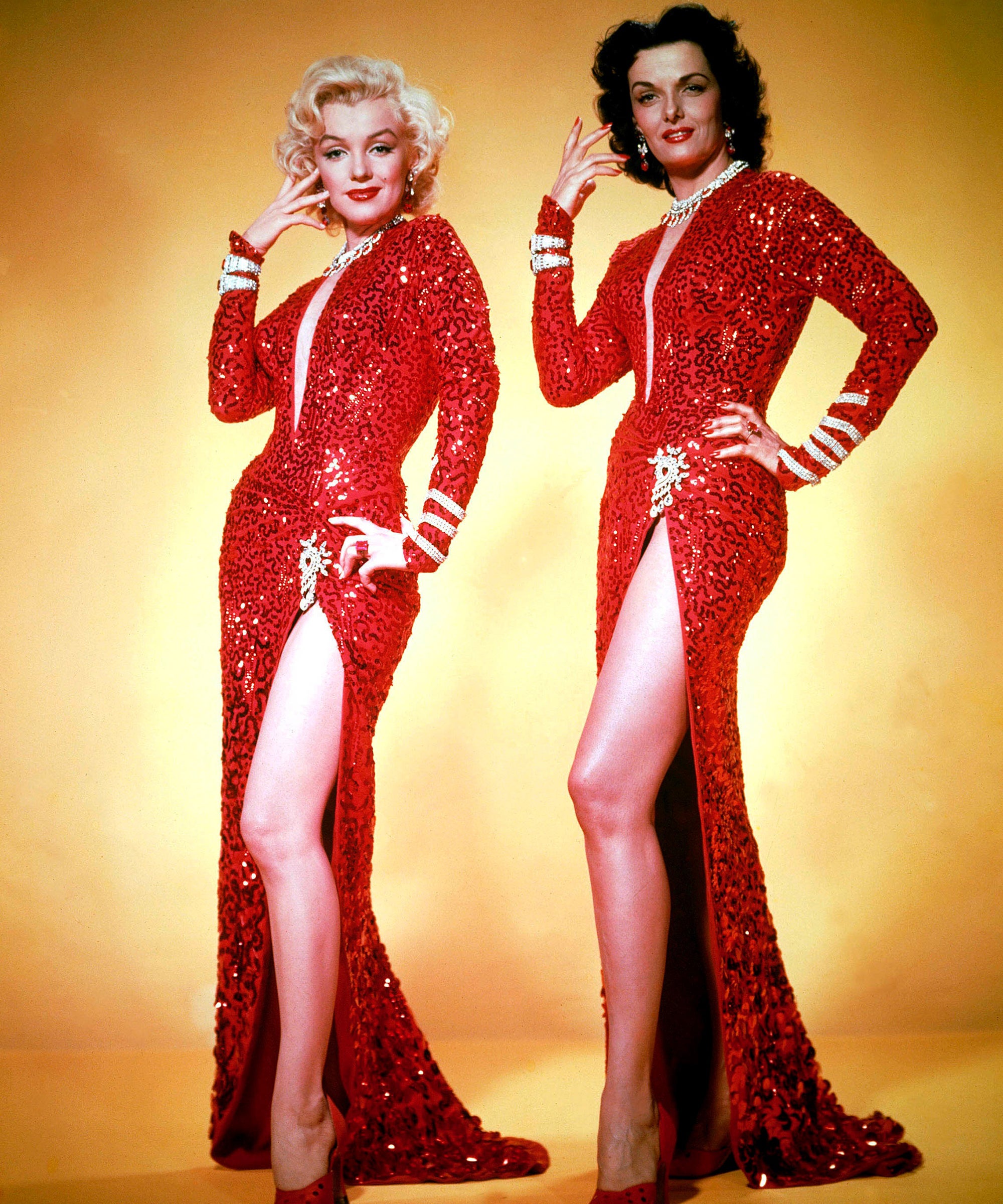
Mandatory Credit: Photo by Ed Clark/20th Century Fox/Kobal/Shutterstock (5886079bv)
Marilyn Monroe, Jane Russell
Gentlemen Prefer Blondes – 1953
Director: Howard Hawks
20th Century Fox
USA
Film Portrait
Les Hommes préfèrent les blondes (1953)
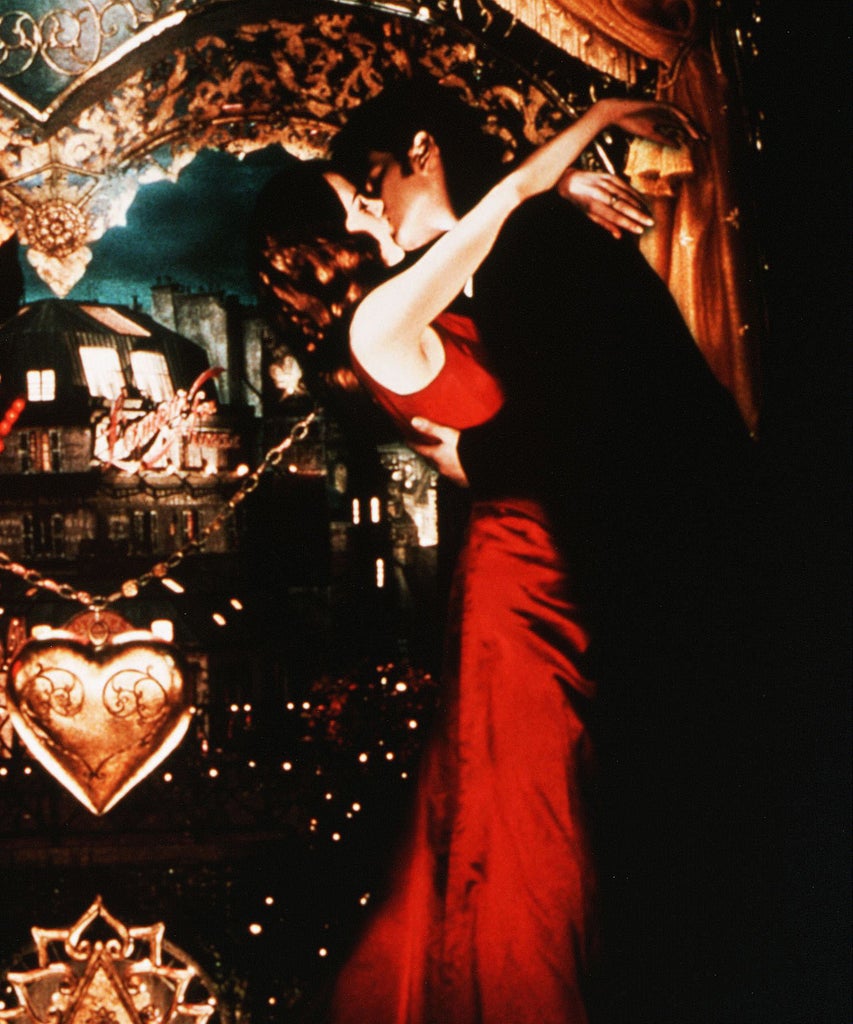
Mandatory Credit: Photo by Sue Adler/20th Century Fox/Kobal/Shutterstock (5883223o)
John Leguizamo, Nicole Kidman, Ewan McGregor
Moulin Rouge – 2001
Director: Baz Luhrmann
20th Century Fox
USA
Scene Still
Red dresses in film have always spelled trouble. To put a woman in red is to immediately place her in a long and often complicated lineage. The women in red who grace our screens tend to be seductive, enchanting, threatening, brave, wayward, and caught in the spotlight of the male gaze — sometimes all at once. The color red is the natural domain of the femme fatale, whether she paints it on her lips or slinks around with a scarlet hem drifting at her ankles. Think of Marilyn Monroe and Jane Russell wiggling across the stage in Gentlemen Prefer Blondes, red gowns offset by white feathers and piles of jewels, or Jessica Rabbit as a parody of barely contained femininity in a sparkling ruby dress in Who Killed Roger Rabbit. Most notably, recall Nicole Kidman in Moulin Rouge playing Satine, a courtesan clad in her namesake fabric as Christian (Ewan McGregor) tries to convince her of the merits of freely reciprocated love.
In The Matrix, the woman in the red dress is an intentionally designed distraction. In Pretty Woman, sex worker Vivian Ward (Julia Roberts) connotes new — and commanding — elegance in her red ballgown and opera gloves. During the school dance scene in Grease, it is, of course, the color that Rizzo turns up in — her tomato cocktail frock contrasting with Sandy’s insipidly pale shades.
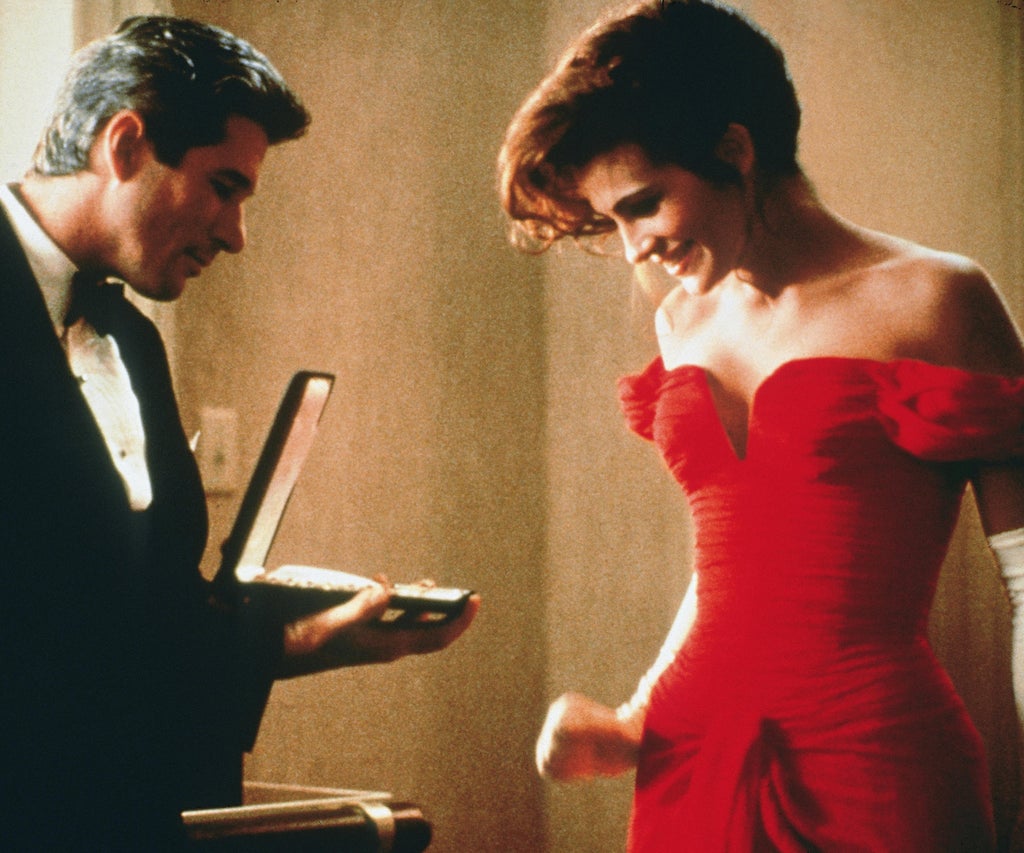
Mandatory Credit: Photo by Touchstone/Kobal/Shutterstock (5884486l)
Richard Gere, Julia Roberts
Pretty Woman – 1990
Director: Garry Marshall
Touchstone Pictures
USA
Scene Still
Comedy
In fact, in both film and folklore, red is often the antithesis of white. In the world of ghosts, a white lady might have been spurned or drowned or left at the altar. But a phantom lady in red was probably involved in some kind of questionable activity. White bestows virginal purity. Red is all too knowing. Contextually, this makes sense. Red, traditionally, signifies many things: Danger. Desire. Luck. Shame. It is the color of flushed skin and fire, of great power, good fortune, and seeping guilt. It embodies all the things that the mild-mannered second Mrs. De Winter, who comes dressed in lighter tones, seems to lack.
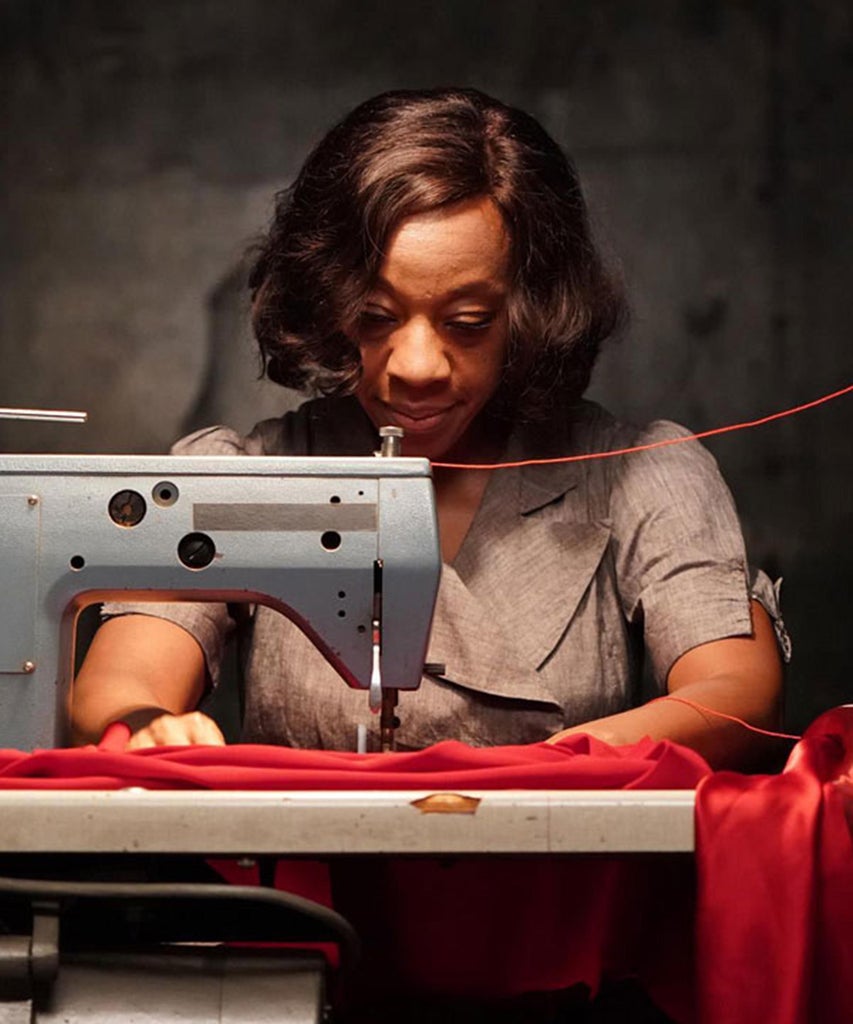
Mandatory Credit: Photo by Moviestore/Shutterstock (10780315b)
Marianne Jean-Baptiste
‘In Fabric’ film – 2018
Directed by Peter Strickland
Red garments are also a classic gothic trope. Angela Carter’s darkly revised fairytales in The Bloody Chamber gleam with ruby chokers and feature vampires clad in blood-stained lace. Peter Strickland’s surreal 2018 film In Fabric features an actual haunted red dress. Du Maurier makes chilling use of red elsewhere in her work, too, most notably in her short story Don’t Look Now about a couple being haunted by visions of their dead daughter wearing a crimson coat in Venice. In Nicholas Roeg’s 1973 film adaptation, which Day cites as another key point of visual inspiration for Rebecca’s costuming, the color is literally inescapable.
In Rebecca, the glamour and horror of the red dress converge. As the narrative progresses, the second Mrs. de Winter finds herself at first unwittingly emulating her predecessor, before supplanting her. This gothic doubling is partly spelled out in the colors she wears. As the film reaches its uneasy, rather too hasty conclusion, a revision in our understanding of the red dress is required, too. This is no straightforward account of innocence versus experience. Instead, it is a story in which no-one escapes clean-handed. We realize, too, that the dead Rebecca, as with plenty of those other famous women dressed in red gowns, was a consummate performer. Like a good many femme fatales, she blurred the boundaries between acting out her own desires and becoming a cipher for others to project their hopes, their fears, their furies, and their jealousies onto. And like a good many of them, she suffered for it.
Du Maurier began writing Rebecca at the age of 30 while living in Egypt where, lonely and disgruntled, she grew paranoid about a woman her husband had previously been briefly engaged to — a woman who signed her name with an “R.” She began the story with the vague idea of one woman envying another, writing in her notes that “wife 2 is haunted day and night… a tragedy is looming very close and CRASH! BANG! Something happens.” It’s an apt summary of what makes a gothic plot satisfying: dread, drama, a resounding crescendo.
Rebecca itself is an ambivalent story, full of twists and turns and nasty revelations. It is a book in which haunting comes in many forms, and a film where jealousy and power are interrogated afresh. The red dress plays only a very fleeting part in the action, but it’s a detail — brazen, bright, disconcerting — that lingers, much like the ghostly woman who wears it.
Like what you see? How about some more R29 goodness, right here?
The Dark Significance Behind Ratched’s Costumes


